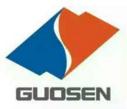Guosen Securities(002736)
Search documents
国信证券:货币政策相机抉择 净息差下降尾声
智通财经网· 2025-12-05 08:53
(1)净息差底线思维的必要性:从资本平衡、盈亏平衡以及风险定价机制等角度而言,净息差维持一 个合理水平是守住经济增长和金融稳定必要条件。(2)大行净息差底线测算:首先,确定经济增速目 标以及对应的银行业总资产增速。预计"十五五"期间名义GDP增速为6.0%~6.9%,对应的M2增速需要维 持在约7.0%~8.0%;根据M2派生方式,银行业总资产扩张速度约6.0%~7.0%。然后,资本角度测算,大 行ROE底线约7%~8%,据此测算净息差底线约1.2%~1.3%。 智通财经APP获悉,国信证券发布研报称,2026年净息差降幅大幅收敛,并且大概率是此轮净息差下行 周期尾声,这与前两年行业净息差普遍下行且底线不确定形成了鲜明的对比。2026年聚焦两条主线,一 是净息差率先迎来拐点的优质个股以及改善幅度较大的低估值个股,二是绝对收益角度,积极布局股息 率具有吸引力的基本面稳健个股。 国信证券主要观点如下: 目前大行净息差底线水平约1.2%~1.3%,已在底线附近 (1)2026年降息需要精准审慎:"合理充裕+相机抉择"的总基调是"战略适配、现实约束、工具支撑"三 大维度综合考量的最优选择。目前净息差和存款利率都已进入 ...
国信证券连续3年获得中国上市公司协会董办最佳实践
Xin Lang Cai Jing· 2025-12-05 08:24
登录新浪财经APP 搜索【信披】查看更多考评等级 炒股就看金麒麟分析师研报,权威,专业,及时,全面,助您挖掘潜力主题机会! 来源:国信头条 近日,中国上市公司协会"2025上市公司董办最佳实践"案例征集活动结果揭晓,国信证券从沪深北三大 交易所5000余家上市公司中脱颖而出,获得最高等级的"最佳实践",这也是公司连续3年获得该荣誉。 责任编辑:杨红卜 登录新浪财经APP 搜索【信披】查看更多考评等级 炒股就看金麒麟分析师研报,权威,专业,及时,全面,助您挖掘潜力主题机会! 来源:国信头条 近日,中国上市公司协会"2025上市公司董办最佳实践"案例征集活动结果揭晓,国信证券从沪深北三大 交易所5000余家上市公司中脱颖而出,获得最高等级的"最佳实践",这也是公司连续3年获得该荣誉。 近年来,国信证券深入贯彻落实新"国九条"和提高上市公司质量有关要求,聚焦公司治理、信息披露、 市值管理、资本运作、ESG实践、服务保障、内部建设等七个方面,持续发力,实现自身高质量发展。 国信证券规范运作成效获各方认可,连续3年获中国上市公司协会董事会最佳实践案例,连续2年获中国 上市公司协会投资者关系管理最佳实践,连续5年获深交所 ...
国信证券:折叠自行车高景气新消费赛道 龙头引领扩容与破圈
Zhi Tong Cai Jing· 2025-12-05 02:46
全球市场:格局相对分散,电助力自行车市场广阔 1)竞争格局:按零售量/零售额计前五大公司分别占19.4%/12.0%的市场份额。零售量角度大行排名第 一,零售量份额为6.2%;零售额角度Brompton小布排名第一,零售额份额为6.2%,大行排名第二、占 2.9%。Brompton在销售额上保持领先,但其龙头地位正受到挑战;大行增长迅猛;德国品牌Birdy等则凭借 独特技术和性能服务于小众性能玩家;此外,新品牌如Viribus快速崛起。2)美国亚马逊平台:分品类 看,美国线上自行车市场的品类结构与中国有较大差别,电动自行车(E-Bike)为第一大品类,折叠车占 比较低;折叠自行车分品牌看,电商集中度与全渠道比较高,小布一超多强占比大约在20-30%;电动自行 车分品牌看,电商集中度逐渐分散竞争日渐激烈,从一超多强到群雄逐鹿。3)海外市场趋势:电动自行 车热度领先,折叠自行车品牌大行与小布热度差距收窄。 风险提示:宏观经济与消费需求疲软;国际政治经济风险;市场竞争加剧风险 折叠自行车以轻巧+便携+适应城市生活为核心特点,成为城市通勤及休闲运动的新兴工具;技术工艺迭 代路径从追求便携轻巧到兼具专业性能。2019- ...
国信证券股份有限公司 关于郑州速达工业机械服务股份有限公司 2025年度持续督导培训工作报告
Zheng Quan Ri Bao· 2025-12-04 23:05
炒股就看金麒麟分析师研报,权威,专业,及时,全面,助您挖掘潜力主题机会! 二、培训主要内容 国信证券股份有限公司(以下简称"国信证券"、"保荐人")作为郑州速达工业机械服务股份有限公司 (以下简称"速达股份"、"公司")首次公开发行股票并在主板上市的保荐人,根据《证券发行上市保荐 业务管理办法》《深圳证券交易所上市公司自律监管指引第1号——主板上市公司规范运作》《深圳证 券交易所上市公司自律监管指引第13号——保荐业务》等有关规定,于2025年11月对速达股份董事、高 级管理人员及相关人员进行了2025年年度培训,具体情况如下: 一、培训基本情况 1、培训时间:2025年11月28日 2、授课人员:葛体武、张达 3、参加培训人员:公司董事、高级管理人员及相关人员 4、培训方式:编制培训讲义,采用现场和线上视频会议相结合的方式 5、培训主题:上市公司治理准则与股份减持 向参加培训人员介绍了《上市公司治理准则》的修订情况,就《上市公司治理准则》对公司治理提出的 新要求进行了解读;结合《上市公司股东减持股份管理暂行办法》《深圳证券交易所上市公司自律监管 指引第18号——股东及董事、高级管理人员减持股份》等有关规定, ...
国信证券(002736) - 2023年面向专业投资者公开发行公司债券(第七期)(品种一)2025年兑付兑息暨摘牌公告
2025-12-04 10:20
| 证券代码:002736 | 证券简称:国信证券 | | 公告编号:2025-088 | | --- | --- | --- | --- | | 债券代码:148531 | 债券简称:23 国证 | 10 | 编号:-【】 | 国信证券股份有限公司 2023 年面向专业投资者公开发行公司债券 (第七期)(品种一)2025 年兑付兑息暨摘牌公告 本公司及董事会全体成员保证信息披露的内容真实、准确、完整,没有虚假 记载、误导性陈述或重大遗漏。 特别提示: 本期债券的债券简称为 23 国证 10,债券代码为 148531,本年度计息期间、 债权登记日及兑付兑息日等如下: 1、本年度计息期间:2024 年 12 月 6 日至 2025 年 12 月 5 日 5、债券摘牌日:2025 年 12 月 8 日 2025 年 12 月 5 日(含)前买入本期债券的投资者,享有本次派发的本金和 利息;2025 年 12 月 5 日(含)前卖出本期债券的投资者,不享有本次派发的本 金和利息。 国信证券股份有限公司(以下简称"发行人""公司"或"本公司")发行的 国信证券股份有限公司 2023 年面向专业投资者公开发行公司债券( ...
国信证券(002736) - 2023年面向专业投资者公开发行公司债券(第七期)(品种二)2025年付息公告
2025-12-04 10:19
证券代码:002736 证券简称:国信证券 公告编号:2025-089 债券代码:148532 债券简称:23 国证 11 编号: -【】 国信证券股份有限公司 2023 年面向专业投资者公开发行公司债券 (第七期)(品种二)2025 年付息公告 本公司及董事会全体成员保证信息披露的内容真实、准确、完整,没有虚假 记载、误导性陈述或重大遗漏。 特别提示: 本期债券的债券简称为 23 国证 11,债券代码为 148532,本年度计息期间、 债权登记日及付息日等如下: 1、本年度计息期间:2024 年 12 月 6 日至 2025 年 12 月 5 日 2、债权登记日:2025 年 12 月 5 日 3、债券付息日:2025 年 12 月 8 日 2025 年 12 月 5 日(含)前买入本期债券的投资者,享有本次派发的利息; 2025 年 12 月 5 日(含)前卖出本期债券的投资者,不享有本次派发的利息。 国信证券股份有限公司(以下简称"发行人""公司"或"本公司")发行的 国信证券股份有限公司 2023 年面向专业投资者公开发行公司债券(第七期)(品 种二)(以下简称"本期债券")将于 2025 年 12 ...
唯特偶:接受国信证券调研

Mei Ri Jing Ji Xin Wen· 2025-12-04 09:18
(记者 曾健辉) 每经AI快讯,唯特偶发布公告称,2025年12月3日15:30-17:30,唯特偶接受国信证券调研,公司投资部 总经理钟科先生,证券事务代表潘露璐女士,证券事务专员吴锋威先生参与接待,并回答了投资者提出 的问题。 每经头条(nbdtoutiao)——让"铁疙瘩"从数万米高空精准"踩刹车",中国商业航天"降本复用"只差"最 后一公里"!朱雀之后,同行排队接力 ...
国信证券资产管理有限公司 关于国信现金增利货币型集合资产管理计划份额持有人大会 表决结果暨决议生效的公告
Zhong Guo Zheng Quan Bao - Zhong Zheng Wang· 2025-12-04 08:40
Group 1 - The core point of the news is the decision made during the meeting of the holders of the GuoXin Cash Increase Money Market Fund, which approved the change of the fund manager and the registration change to Penghua Cash Increase Money Market Fund [1][3] - The meeting was conducted via communication, with voting taking place from September 27, 2025, to November 28, 2025, and the results were announced on December 2, 2025 [2][3] - A total of 14,925,949,887.91 shares participated in the voting, representing 58.15% of the total shares, meeting the legal requirements for the meeting [2] Group 2 - The voting results showed that 13,346,825,786.49 shares were in favor, 495,630,351.95 shares were against, and 1,083,493,749.47 shares abstained, with the approval rate reaching 89.42% [3] - The decision from the meeting will take effect immediately after the vote is passed, and the management will report the decision to the China Securities Regulatory Commission within five days [3][4] - A redemption period will be set from December 5, 2025, to December 12, 2025, during which holders can opt to redeem their shares without any fees [4][5] Group 3 - After the redemption period, the management will execute the formal transition of the fund and initiate the necessary procedures for changing the fund manager [5] - The effective date of the Penghua Cash Increase Money Market Fund contract will be announced separately by Penghua Fund Management Company [5] - Investors will be able to check detailed information regarding the new fund operations on the Penghua Fund website [5]
国信证券白沙泉投资者教育基地荣获杭州市人民政府集体二等功
Xin Lang Cai Jing· 2025-12-04 06:10
来源 国信头条 近日,杭州市人民政府办公厅公布了打击治理电信网络诈骗违法犯罪工作行政奖励名单,国信证券白沙 泉投资者教育基地(以下简称"投教基地")凭借在反诈工作中的优秀表现,荣获杭州市人民政府集体二 等功。这一荣誉不仅是对国信证券白沙泉投资者教育基地投教反诈工作的褒奖,更是对国信证券积极履 行社会责任、践行金融工作的政治性和人民性的肯定。 国信证券白沙泉投资者教育基地由国信证券联合西湖区白沙泉并购金融街区管委会共同建设,是中国证 监会授牌的全国证券期货投资者教育基地。 一直以来,国信证券高度重视投资者教育工作,将投资者教育与防范电信网络诈骗工作深度融合,投教 基地协同国信证券各下辖营业网点积极投身于反诈宣传工作,经过不懈努力与探索,成功构建了一套切 实可行、行之有效的反诈"三道防线"。 第一道防线 普适性反诈宣传"面面俱到" 自2019年起,国信证券投教基地就开始不断探索多元化触达公众的投教反诈形式,力求以群众"看得 见、容易懂、记得住、好接受"的方式,面向社会公众开展普适性反诈宣传活动。 在这一过程中,投教基地在国信证券内部培养并成立了一支公益反诈讲师队伍,形成"人人都是宣讲 员"的浓厚氛围。这些公益反诈 ...
奇德新材不超2.75亿定增获深交所通过 国信证券建功
Zhong Guo Jing Ji Wang· 2025-12-04 02:45
Core Viewpoint - The company, Qide New Materials, has received approval from the Shenzhen Stock Exchange for its application to issue shares to specific investors, pending final approval from the China Securities Regulatory Commission (CSRC) [1] Summary by Sections Issuance Details - The company plans to raise a total of up to 27,500 million CNY through the issuance of shares, which will be allocated to projects including the construction of a composite materials production line in Thailand, an expansion project for carbon fiber products, and working capital [1][2] - The issuance will not exceed 30% of the total share capital after excluding treasury shares, amounting to a maximum of 25,039,170 shares [2][3] Project Investments - The total investment for the Thailand composite materials production line is approximately 14,961.99 million CNY, with 14,900 million CNY to be funded from the raised capital - The expansion project for carbon fiber products has a total investment of 9,679.03 million CNY, with 9,600 million CNY from the issuance - The working capital project is set at 3,000 million CNY, fully funded by the raised capital [2] Shareholder Structure - As of the announcement date, the total share capital of the company is 84,160,000 shares, with the actual controller holding 49.93% of the shares [3] - Post-issuance, if the maximum number of shares is issued, the total share capital will increase to 109,199,170 shares, and the actual controller's shareholding will decrease to 38.48%, maintaining control without a change in ownership [4] Underwriting and Regulatory Compliance - The underwriting for this issuance is handled by Guosen Securities Co., Ltd., with designated representatives [5]


